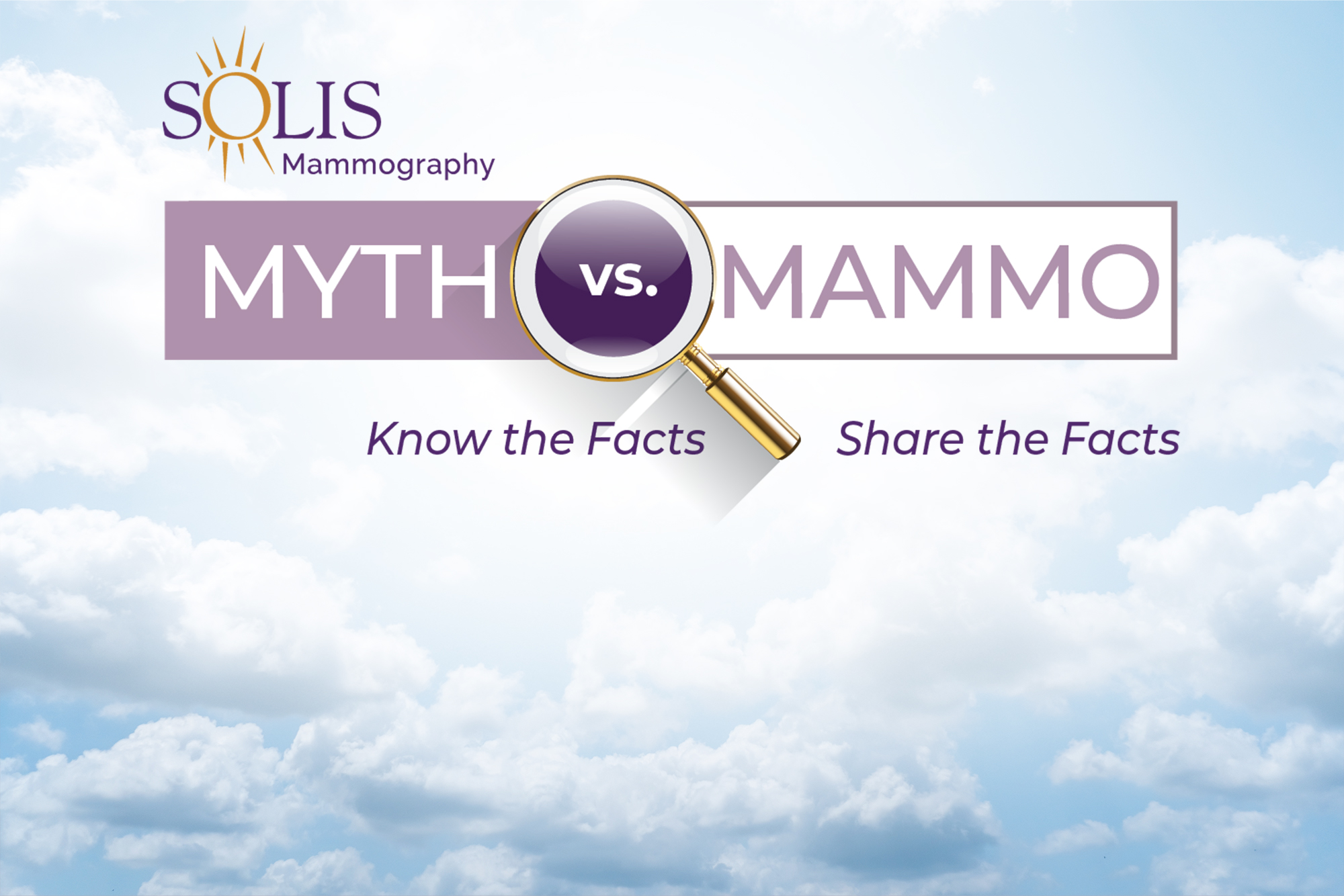10 Mammography Myths Explained (Infographic)

We're clearing the air on mammography myths because when it comes to breast health, facts matter.
Myth: You can delay our annual mammogram until COVID-19 is over.
Fact: Don't delay - 1 in 8 women will develop breast cancer in their lifetime.
Women who have postponed or delayed annual screening could be living with undiagnosed breast cancer that would otherwise have been detected through an annual mammogram. The longer the delay in detection, the greater the chance of higher treatment costs and decreased life expectancy. The National Cancer Institute predicts more than 10,000 additional deaths from breast and colorectal cancer will occur due to postponed screenings during Covid-19.
Myth: There are so many competing guidelines about when to start and how frequently to get a mammogram that there aren't any right answers.
Fact: The clinical data is clear.
Annual screenings beginning at the age of 40 result in a nearly 40% reduction in mortality compared to 23% for biennial screening. Guidelines establishing the age of 50 as the age to initiate screening do not hold up to real-world scrutiny, because one out of every six breast cancers is diagnosed in women between 40 and 49. Additionally, the subset of cancers in this age group tends to be much more aggressive, with a higher incidence of recurrence.
Myth: Only women with a family history of breast cancer get breast cancer.
Fact: 85% of breast cancers occur in women who have no family history of breast cancer.
Myth: I don't have time for a mammogram. But I don't feel any lumps or have any symptoms, so I should be fine.
Fact: Many breast cancers are diagnosed in women who never had any symptoms at all. Not even a lump.
Not every woman who is diagnosed with breast cancer experiences symptoms, which is why an annual screening is so important. Some breast cancers may be too small to be detected by human touch and can only be found through 3D mammography. Remember, while breast cancer is not preventable, through early detection it is curable.
Myth: You can reduce or change your risk for breast cancer.
Fact: There are many risk factors that can be controlled.
While there are many risk factors women can't control, including family cancer history and genetic mutations, there are many that can be controlled. For example, daily exercise of at least 30-minutes, as well as maintaining a normal BMI, particularly after menopause, because fat cells produce estrogen. For every 11 pounds gained, the likelihood of developing breast cancer increases by 3%. Another controllable risk factor is alcohol, which increases the risk for breast cancer as consumption increases.
Myth: It doesn't matter where you go, all mammograms are the same.
Fact: When selecting a provider, look for focused expertise, because it does matter who reads a mammogram.
Mammograms, and the providers who perform them, vary greatly. The interpretation of screening results is most accurate when performed by sub-specialized breast radiologists who read a high volume of both screening and diagnostic mammograms and who are audited regularly on their screening and interpretation through peer review. The other critical factor is technology. A screening protocol centered on 3D mammography has been clinically proven to increase the early detection of breast cancer.
Myth: All mammograms are painful.
Fact: SmartCurve is curved for comfort.
Outdated, flat compression systems used by many providers are known to cause pain and discomfort in many women. Solis Mammography, however, uses a revolutionary comfort technology called SmartCurve, which is curved to match the shape of a woman's breast. Research has shown that 93% of women who have experienced pain with traditional compression systems reported increased comfort with a SmartCurve mammogram.
Myth: Young women in their 20s and 30s don't need to worry about their breast health.
Fact: We recommend that women begin monthly breast self-exams at age 20 to build breast awareness.
We are also firmly aligned with the American College of Radiology's recommendation that all women have a breast cancer risk evaluation no later than age 30 with their primary care provider, which is particularly important for Black women and women of Ashkenazi Jewish descent. We know women in these population groups are at increased risk for developing breast cancer earlier in life and have more biologically aggressive cancers.
Myth: Women can wait until 50 to have a baseline mammogram.
Fact: A baseline mammogram is your first mammogram.
If you are of average risk, have it at age 40. While some mammography screening guidelines recommend that women not initaite screening until age 50, Solis Mammography strongly recommends that every woman have a baseline mammogram at age 40. Breast density plays a key role in establishing a woman's breast cancer risk profile. However, density can only be established through a baseline, or first, mammogram. A woman cannot knowledgeably manage her breast health without htis key finding. The American Society of Breast Surgeons recommends that an annual screening protocol begin at age 40, with 3D as the preferred modality, and that women with increased levels of breast density (levels C and D in an A, B, C, D hierarchy) consider supplemental imaging. Approximately 50% of all women are categorized as having dense breast tissue.
Myth: Women over 75 no longer need to get a mammogram.
Fact: When to stop getting annual mammograms is not an age-related consideration, it's health related.
Every woman should continue to receive annual screening mammography while in good health and without life-limiting comorbidities, which can mean well into her 70s and later.
